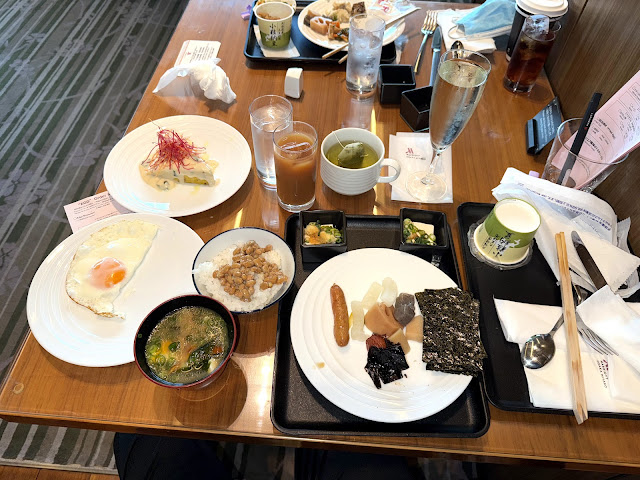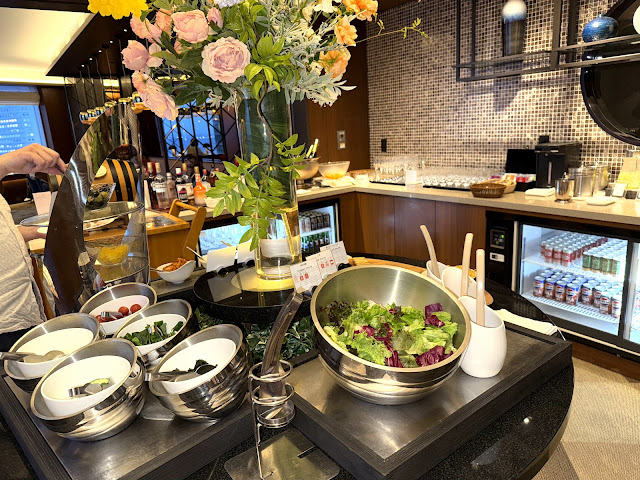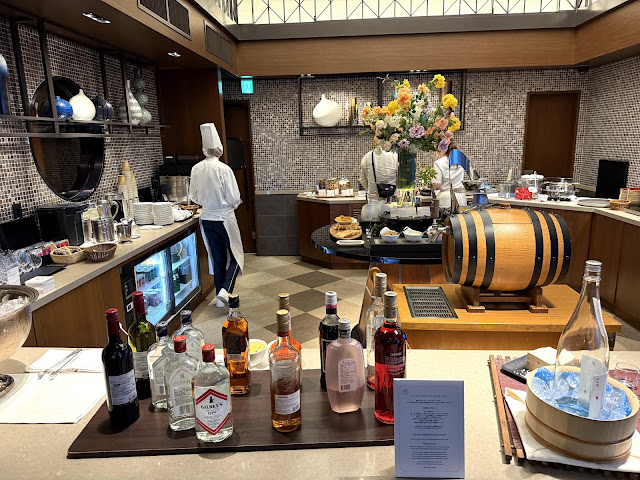 Japan had the first bullet train more than 60 years ago. It was 10October1964, when the opening ceremony was held in Tokyo in anticipation of Japan's first-ever Olympic Games, which began that day.
Japan had the first bullet train more than 60 years ago. It was 10October1964, when the opening ceremony was held in Tokyo in anticipation of Japan's first-ever Olympic Games, which began that day.- The Shinkansen, meaning new mainline, with a separate track, arrived when normal train traffic had reached the limit for carrying passengers and freight.
- A train trip between Osaka and Tokyo dropped from 6 hours and 40 minutes to 4 hours, shortened to 3 hours and 10 minutes by 1964, and is now 2 hours and 30 minutes. From the Shin-Osaka Station to the Shin-Yokohama Station only takes a little more than 2 hours.
- In 1964 the track was 320 miles long. Today, it's up to 1484 miles. The original itinerary incorporating Tokyo, Nagoya and Osaka now carries 159 million passengers/year. In this 6 decade period, more than 10 billion passengers have been safely handled. CAN YOU BELIEVE THAT NOT ONE PASSENGER HAS YET BEEN KILLED IN A DERAILMENT, COLLISION OR TRAIN ACCIDENT?
- The Shinkansen has maximum speeds from 160-200 MPH. Faster speeds are not deemed feasible because of noise pollution.
- Trains are up to 16 cars long and they all run on time, with exceptions, like typhoon, snowstorm, earthquake or other circumstances.
- Traveling by the Tokaido Shinkansen from Tokyo to Osaka produces only around 16% the carbon dioxide equivalent journey by car.

- There are three classes:
- Second class
- First class, or Green Car
- Gran class, with more premium services
- The system shuts down between midnight and 6AM for maintenance.
- The Tohoku line was expanded to Shin-Hakodate in 2016, and will in 2039 reach Sapporo
- Current plans are to begin using maglev trains with speeds up to 310 MPH around 2034, if noise and other problems can be overcome.
- In 2011, the Chinese high-speed railway network passed Japan with 370 million passengers/year.
- All Chinese high-speed trains use Japanese technology.
- China now leads the world in high-speed rail use with two-thirds of the world networks.
- The Shanghai maglev (magnetic levitation) train uses German technology and is the only one currently in operation with a top speed of 268 MPH. Commenced service in 2001. I rode it a couple times, and the noise, especially outside the train, was horrendous. However, because of that problem, the speed since 2021 has been reduced to 186 MPH. While noise pollution and electromagnetic radiation remain problems, what is holding this technology back is said to be cost.
- According to a report in the People's Railway Post in January, average seat occupancy is 70% and second-class fares range from $US 0.045 per km on 200-250km/h routes to $US 0.077 on higher-speed lines. This is three to four times the fare charged on conventional express trains but lower than or comparable with discounted air fares and, at the lower end, similar to intercity bus fares. By international standards Chinese high-speed fares are extremely low, being around a quarter to a fifth of the typical ticket price in other countries.
- India could be using Japanese Shinkansen trains by 2029.
- France, Italy and Germany helped pioneer the bullet train in Europe from the late 1970s.
- The Trans-European high-speed rail network is a goal of the European Union.
- Italy had their first bullet train in 1977 at 160 MPH, with now 834 track miles and a top speed of 186 MPH.
- France was next in 1981 with their TGV service, now up to 1740 miles.
- Germany introduced high-speed service in 1991, and now has 1030 miles of track.
- The Channel Tunnel was completed in 1994, and now takes slightly less than 2 hours between London and Paris/Brussels. The maximum speed is only 99 MPH.
- As of 2025, Spain operates the largest system at 2469 miles, trailing only China.
- The major high-speed trains can go up to 198 MPH.
- Does the U.S. have high-speed trains? Yes.
- The most common international definition of high-speed rail travel begins at 155 MPH. However, some consider 124 MPH on older lines good enough.
- The Amtrak Acela (above) has just introduced 160 MPH service. Brighline (right) has a top speed of 125 MPH.
- As of 2024, the California High-Speed Rail Authority is working on the California High-Speed Railproject and construction is under way on sections traversing the Central Valley. The Central Valley section, between Merced and Bakersfield, is planned to begin passenger service by 2030.[5]Brightline West is a privately operated route that is currently under construction between the Las Vegas Valley and Rancho Cucamonga in the Greater Los Angeles area,[6] with service set to begin by 2028.[7] Both projects received funding following the awarding of a federal grant of about $3 billion for each.[8][9]
- Does Hawaii have a high-speed train? No. Our relatively new Honolulu Skyline goes up to 55 MPH. However, we have America's first ever fully automonous mass transit railway.
- Cost of flying or training in Europe?
- Relative cost of high-speed trains systems?
Prior to departure for our bullet train ride, had breakfast at our hotel.
Caught the Midosuji metro to Shin-Osaka. Looked around for our train bento. Borrowed beer from the Marriott. Videos of our Nozomi Shinkansen arriving and leaving, with a quick seat view of the ouside.
The bullet train arrived a few minutes late, so by the time we boarded and barely got to our seat, the doors closed and our Nozomi left Shin-Osaka. My lunch.
We sat on the left side of the Shinkansen, but clouds blocked the view of Mount Fuji. Got from Shin-Osaka to Shin-Yokohama in 2 hours 8 minutes. This is photo of what we could have seen.
- Somehow, we got on the wrong JR train, which terminated after a few stops.
- So we got off and looked lost. Some nice man noticed our dilemma and suggested that we catch the next train on the other side of the platform, and get off at Yokohama Station.
- We did, and after arriving at the exit gate, showed the attendant our Shinkansen ticket, he kept that ticket and waved us through. We never had to use our Suica card for the transfer from Shin-Yokohama Station to Yokohama Station. We might have found a loophole in the system. Asked him about the direction to the Sheraton Yokohama Bay, and he pointed in a certain direction.
- After a couple of minutes, we were lost again, but saw an Information Desk sign pointing one escalator floor up. We did so, but could not find that desk.
- However, I looked up, and there was the Sheraton. Took a convenient elevator one floor up and crossed the bridge to our hotel.
Checked in and they gave us a terrific room, on the 26th floor, with view of Mount Fuji, and two doors away from the Club Lounge. It was still cloudy, so no Mount Fuji...yet. However, the suitcases we sent the previous day using Minato luggage forwarding service, were sitting in our room.
It was around 5:30PM when the lounge opened for food/drinks, so we walked a few feet to get in,.There was a ramen bar too. They change ramens daily.
We spent 4.5 hours in the lounge. Several ramens and drinks later, we carefully walked back to our room. Slept well and went down to the Compass Restaurant, famous for its Kanagawa buffet breakfast.
Had two courses. First, another ramen with a Japanese version of Hawaiian poke.
Then a more traditional Japanese breakfast with rice, miso soup, natto, cubes of raw tuna, tofu, pork tonkatsu, pork with miso, two eggs over easy and assorted Japanese pickles.
Today, we rest.
-





























Comments
Post a Comment